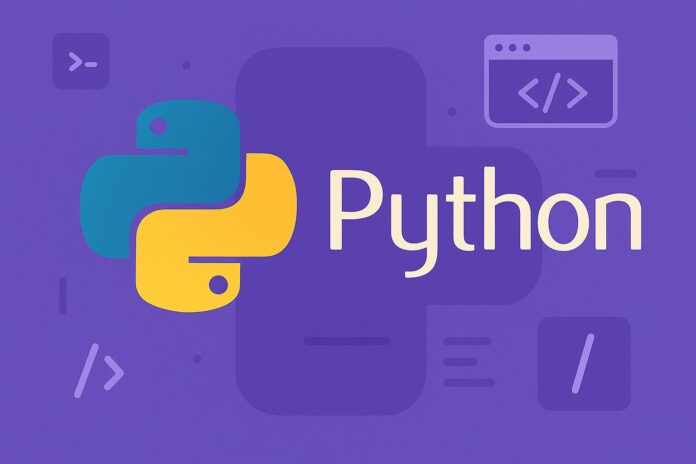Table of Contents
- Introduction
- Why Use Plugins?
- Role of Inheritance and Interfaces in Plugin Architecture
- Setting Up a Plugin System: Step-by-Step
- Building a Basic Plugin System in Python
- Advanced Plugin System Example with Dynamic Loading
- Best Practices for Plugin Development
- Real-World Use Cases of Plugins
- Common Mistakes to Avoid
- Conclusion
Introduction
Plugins are a powerful way to extend the functionality of an application without modifying its core code.
In modern software architecture, plugin systems are common in CMS platforms, IDEs, frameworks, and even desktop applications.
Python’s support for object-oriented programming, duck typing, and dynamic imports makes it an excellent choice for building robust, flexible plugin systems.
In this article, we will explore how to build plugin systems using inheritance and interfaces in Python.
Why Use Plugins?
- Modularity: Add or remove features without altering the core system.
- Extensibility: Allow third-party developers to extend your system.
- Maintainability: Isolate optional features from the base application.
- Customization: Enable users to customize the application to suit their needs.
Plugins help you keep the core codebase clean while still offering enormous flexibility for expansion.
Role of Inheritance and Interfaces in Plugin Architecture
Inheritance
Inheritance provides a way to define a base plugin class that outlines the necessary structure or behavior, which all plugins must extend.
This ensures that all plugins share a consistent API and behavior.
Interfaces (Abstract Base Classes)
Interfaces define the methods a plugin must implement without dictating how they should work.
Python’s abc module allows you to create Abstract Base Classes (ABCs) to enforce interface-like behavior, even though Python does not have traditional interfaces like Java.
Setting Up a Plugin System: Step-by-Step
- Define a base class or abstract class for plugins.
- Create different plugin classes that inherit from the base.
- Use dynamic discovery and loading techniques if needed.
- Ensure all plugins adhere to a consistent API.
- Manage and invoke plugins dynamically in the core application.
Building a Basic Plugin System in Python
1. Define the Plugin Interface
from abc import ABC, abstractmethod
class Plugin(ABC):
@abstractmethod
def run(self):
"""Run the plugin functionality"""
pass
The Plugin abstract class forces all plugin classes to implement a run method.
2. Create Plugin Implementations
class HelloWorldPlugin(Plugin):
def run(self):
print("Hello from HelloWorldPlugin!")
class GoodbyePlugin(Plugin):
def run(self):
print("Goodbye from GoodbyePlugin!")
Both plugins now adhere to the Plugin interface.
3. Use Plugins Dynamically
def execute_plugin(plugin: Plugin):
plugin.run()
# Instantiate and execute
plugins = [HelloWorldPlugin(), GoodbyePlugin()]
for p in plugins:
execute_plugin(p)
This code ensures that each plugin can be executed without knowing their specific implementation details.
Advanced Plugin System Example with Dynamic Loading
Imagine a larger system where plugins are discovered at runtime:
1. Discover Plugins Dynamically
You can load all plugins from a folder dynamically using importlib.
import importlib
import pkgutil
def load_plugins(package):
plugins = []
for loader, name, is_pkg in pkgutil.iter_modules(package.__path__):
module = importlib.import_module(f"{package.__name__}.{name}")
for attr in dir(module):
obj = getattr(module, attr)
if isinstance(obj, type) and issubclass(obj, Plugin) and obj is not Plugin:
plugins.append(obj())
return plugins
2. Example Directory Structure
plugins/
__init__.py
hello_plugin.py
goodbye_plugin.py
Each file defines a different plugin class that inherits from Plugin.
3. Using the Dynamic Loader
import plugins
loaded_plugins = load_plugins(plugins)
for plugin in loaded_plugins:
plugin.run()
This approach allows you to add new plugins just by placing them in the plugins/ folder without modifying the main application.
Best Practices for Plugin Development
- Keep Plugins Isolated: Plugins should be independent and not tightly coupled to the core.
- Follow the Interface: Always make sure plugins implement the required methods.
- Use Clear Naming Conventions: Helps in automatic discovery and maintenance.
- Graceful Failure: Plugins should fail without affecting the main application.
- Versioning: If plugins depend on specific versions of the core, enforce compatibility checks.
Real-World Use Cases of Plugins
- Web Frameworks: Django admin customizations, Flask extensions.
- IDEs: VSCode, PyCharm plugins.
- Game Engines: Custom behaviors and assets in Unity or Unreal Engine.
- Browser Extensions: Chrome, Firefox plugin architecture.
- Data Science: Adding custom analysis pipelines in tools like Jupyter.
Common Mistakes to Avoid
- Monolithic Plugins: Avoid making plugins too big; prefer focused, smaller plugins.
- Ignoring Interface Compliance: Always enforce the plugin interface contract.
- Mixing Plugin and Core Logic: Keep the core logic separate from the plugin logic.
- Lack of Error Handling: Plugins should fail silently or log errors without crashing the entire system.
- Tight Coupling: Avoid letting plugins directly modify core behaviors unless specifically intended.
Conclusion
Building plugins with inheritance and interfaces in Python is a powerful technique to design highly modular, scalable, and flexible applications.
By defining a consistent structure using Abstract Base Classes and leveraging dynamic loading techniques, you can allow your application to grow organically with new features without touching the core system.
Understanding and mastering plugin architecture will not only make you a better Python developer but also prepare you to architect larger and more complex software systems effectively.


